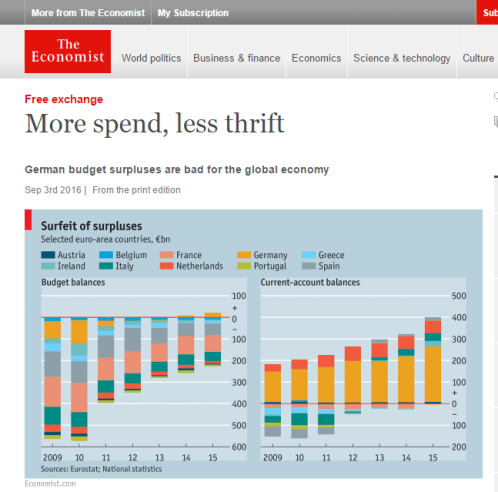Economists have a terrible physics envy.
In 1954, Chen Ning Yang and Robert Mills formulated what is now called “Yang-Mills theory” or “gauge theory” in Physics. It took a while for their work to be used as an empirical theory. The Electroweak Theory was discovered in 1967 and Quantum Chromodynamics around early 70s.
The point of the above is that sometimes theory is ahead of experiments in Physics. Around the 80s, some (and not all) theoretical physicists started working on string theory.
But if you had asked Mr Yang and Mr Mills what the usefulness of their work was in 1954, their answer wouldn’t have looked satisfactory. In the same way, string theory is something which possibly is ahead of its time but just that the connection to experiments seems longer. It is however fashionable to see people writing about string theory and debunking it as pseudoscience without any knowledge of it whatsoever.
Case: Paul Romer’s article The Trouble With Macroeconomics. The abstract says:
In the last three decades, the methods and conclusions of macroeconomics have deteriorated to the point that much of the work in this area no longer qualifies as scientific research. The treatment of identification in macroeconomic models is no more credible than in the first generation large Keynesian models, and is worse because it is far more opaque. On simple questions of fact, such as whether the Fed can influence the real fed funds rate, the answers verge on the absurd. The evolution of macroeconomics mirrors developments in string theory from physics, which suggests that they are examples of a general failure mode of for fields of science that rely on mathematical theory in which facts can end up being subordinated to the theoretical preferences of revered leaders. The larger concern is that macroeconomic pseudoscience is undermining the norms of science throughout economics. If so, all of the policy domains that economics touches could lose the accumulation of useful knowledge that characteristic of true science, the greatest human invention.
Although the new consensus macroconomics is all trash, there are three things wrong with this:
- String theory is not pseudoscience. It is a perfectly respectable theory. It comes tantalizingly close to describing the physical world with a few principles. It produces Einstein’s theory of general relativity as a “low-energy approximation” and some solutions of it look very much like the real world, though not exactly. It however has many problems. That it works only in 11 space-time dimensions (!!) isn’t a problem. This is solved by what is known as “compactification”. The real trouble is that it has many solutions and string theorists are stuck at how to proceed. Otherwise its methodology are highly scientific and are being applied in increasing our understanding of quantum field theory which describes fundamental particles and their interactions.
- Romer’s equivalence to string theory gives the new consensus macroeconomics some respect. This is totally undeserved.
- The new consensus macroeconomics is not the only answer. Keynes made a fundamental breakthrough in macroeconomics in the 1930s and his colleagues and followers have improved upon his work greatly. So there’s a Cambridge revolution. The new consensus however is based on a bastardized version of Keynes: it’s Keynesian only in the name. Otherwise it has everything else Keynes so passionately debunked.
Even outside Cambridge, such as the work of Morris Copeland – his flow of funds approach and the work done by Tobin and subsequently used by Post-Keynesians have contributed to a much better understanding of economic dynamics.
Anyway, economists seem to have a physics envy and should stop comparisons to it. I find it amusing that economists have made a mess of their subject and struggle with basic flow of funds concepts venturing into critiquing string theory.

